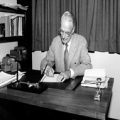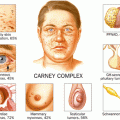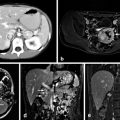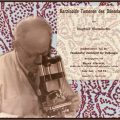Illustation of Armand Trousseau
History of Armand Trousseau
Born in Tours, France in 1801, Armand Trousseau (1801–1867) studied medicine under the apprenticeship of the knowledgeable Pierre Bretonneau in Paris [1, 2]. Dr. Trousseau began his studies in his hometown, eventually moving to Paris to pursue clinical observations (Medicine) at the Hôpital Générale during the infamous diphtheria epidemic [1, 2]. Receiving his doctorate in 1825, he quickly progressed to Agrégé in 1827, the highest teaching post on the faculty [2]. A year later, Trousseau was assigned by the French government to probe the causes of epidemics occurring in the south of France [2]. After completing his assignment, Trousseau traveled to Gibraltar to investigate the causes of yellow fever, which at that time had claimed the lives of many French people [2]. His research led to the published work entitled, Anatomical, Pathological, and Therapeutic Researches of the Yellow Fever of Gibraltar [2].
In addition to gaining notoriety for his work on yellow fever, Trousseau wrote a monograph on laryngeal tuberculosis that also garnered him widespread recognition [2]. He received the top honor from the French Academy of Medicine, in 1837, for his monologue discussing laryngeal tuberculosis. Trousseau succeeded his mentor, Bretonneau, becoming one of the first in France to perform a tracheotomy in patients suffering from croup and diphtheria; 25 % of his cases were successful [2] . He wrote a monograph on the procedural elements of tracheostomy as well as intubation in 1851, noting that tracheostomy was the only way to save a patient from succumbing to diphtheria-related laryngo-pharyngeal swelling and suffocation [2].
Regarding his academic appointments, Trousseau was appointed physician at the Hôpital St. Antoine in 1839 [2]. As his accomplishments and publications mounted, Trousseau went on to become the chair of therapy and pharmacology.His work as a distinguished chair demonstrated his exemplary teaching and diagnostic capabilities [2]. In 1850, he assumed the chair of clinical medicine working at the Hôtel-Dieu [2]. After 6 years as chair of clinical medicine, Trousseau was once again distinguished for his accomplishments by being elected as a member of the prestigious French Academy of Medicine [2].
Trousseau eloquently described the presentation of many disease states and in doing so allowed the reader to draw a vivid sketch of the patient’s complaints in his/her mind. As the author of many great medical dissertations, including Clinique Medicale de l’Hotel Dieu de Paris, he allowed his students to learn about certain diseases using a case description basis. In his monographs, he described well-known medical eponyms such as Addison’s disease, Graves’ disease and what is now known as Trousseau’s sign of latent tetany—being the first to describe this sign .
Trousseau’s Sign and Its Significance in Endocrinology
…I describe to you the phenomena which characterize contractions, I shall show you that compression of the affected limb brings them on very rapidly and without fail. I discovered this influence of pressure [on tetany of upper extremities] by chance. I was present when a woman suffering from contractions was being bled from the arm at the Necker Hospital, and I saw a paroxsym return in the hand on the same side when the bandage was applied round the arm. I at first thought it was brought on by the venous congestion caused by the pressure on the vein; but on trying to account for the phenomenon, I found in other patients that by compressing the arteries, the same results were produced. I have often since repeated the experiment, and as the contractions cease as soon as the pressure is removed, and the patient is therefore not much troubled…In the upper limbs, the thumb is forcibly and violently adducted; the fingers are pressed closely together, and semi-flexed over the thumb in consequence of the flexion of the metacarpo-phalangeal articulation; and the palm of the hand…assumes a conical shape. [3]
Trousseau described how this “mild form of tetany” might last 5 min to several hours without interruption, upon which the sensation of formication returns yielding termination of the spasm [3]. He also described how pain, tingling and numbness, anesthesia, and impaired touch accompany the convulsions [4]. Regarding the pathophysiology of the tetany, Trousseau hypothesized that both arterial and venous compression resulted in vascular congestion [3]. He went on to report that cold temperatures seem to hinder the contractions when applied to the affected area, yet when normal temperature returns, the convulsions are short to follow [3]. Trousseau also offered an explanation as to the etiology of latent tetany, and believed that the mild convulsions were rheumatic in nature, dismissing the notion that serious “organic lesions” could be the culprit [3]. He also attributed pregnancy, lactation, diarrhea, and emotional disturbance as causes of latent tetany, describing many cases with the aforementioned ailments he personally witnessed on the hospital wards [3]. Today, Trousseau’s sign of latent tetany is used as a clinical diagnostic tool for hypocalcemia usually following thyroid or parathyroid surgery . Though he did not know it at the time, Trousseau’s sign would prove to be clinically useful for the detection and treatment of hypocalcemia after thyroid and parathyroid surgeries.
Stay updated, free articles. Join our Telegram channel

Full access? Get Clinical Tree







